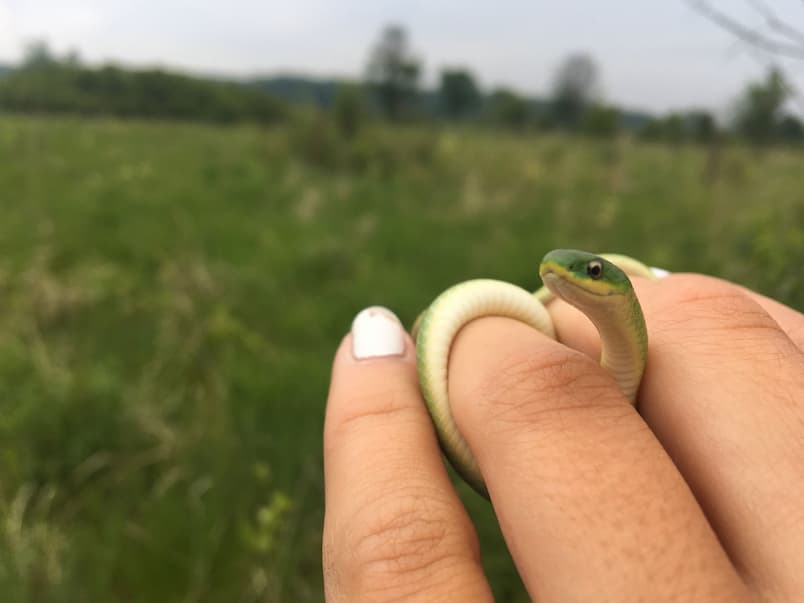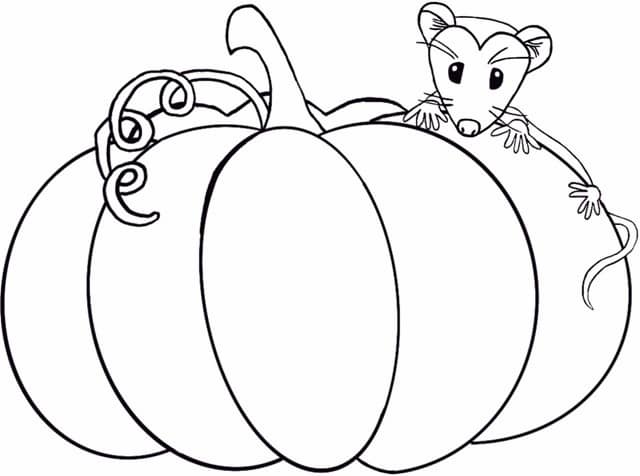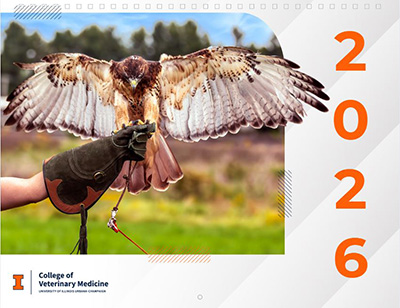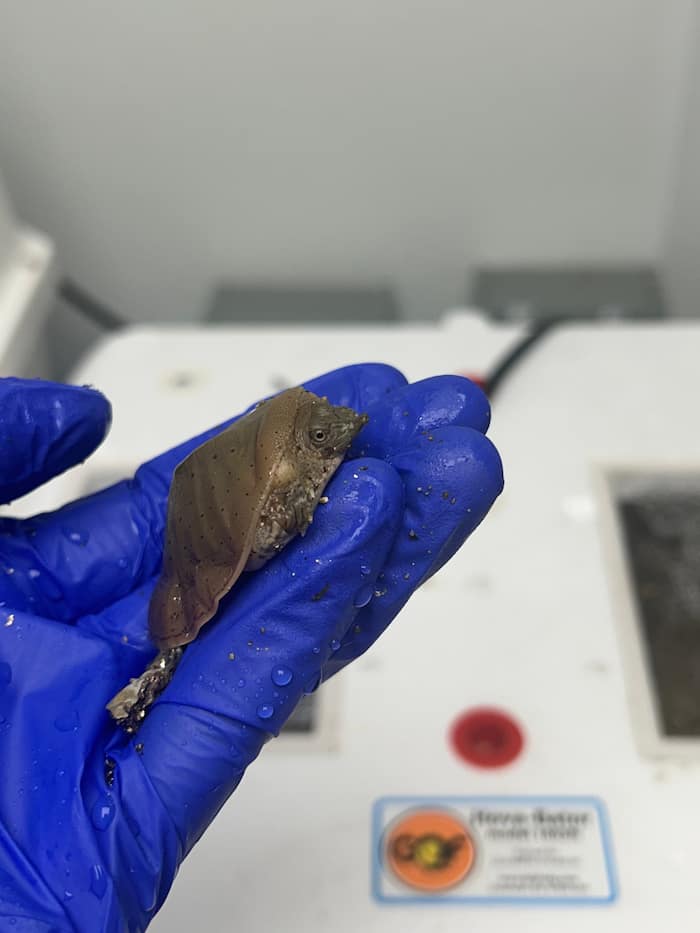What should you do if you come across a venomous snake?
If you are out for a hike and come across a venomous snake, it is best to just leave it alone and give it space. As you have probably heard several times since childhood, the animal is more afraid of you than you are of it. This is true of snakes. Snakes do not chase people and will either stay in place to camouflage or move away from you when given the opportunity. According to Mississippi Wildlife, Fisheries, and Parks, “approximately 75 percent of all bites by venomous snakes occur when an individual is trying to kill or otherwise harass the snake.” The other 25% are likely from accidentally stepping on the snake or examining the fangs of a deceased animal, which can still envenomate you if handled incorrectly. Remember that venomous snakes play an important role in the ecosystem and getting close to them is not worth risking your life. The best thing to do when you see a venomous snake is to back up, move away, and leave them be.
If there is a venomous snake near your home, especially if you have a pet or children, the safest action is to contact animal control to relocate the animal. Killing the snake negatively impacts the environment and puts you in danger as you go near the animal. Allowing a trained handler to move the animal will keep you safe and allow the snake to survive.
What are the benefits of snakes?
As mentioned above and before, snakes are beneficial to humans. How so, you ask? For one, snakes play a very important role in the ecosystem as both a predator and prey. As a predator, snakes keep rodent populations in check. In places that have removed snakes in the past, rat populations exploded and caused a lot of damage. Smaller species, such as green snakes, red-bellies, and young garter snakes also eat insects and can keep those populations in check as well. Snakes are a great method of pest control that is easy, harmless, and free. Please think twice about controlling pests with chemicals as that can damage the environment and harm other wildlife.
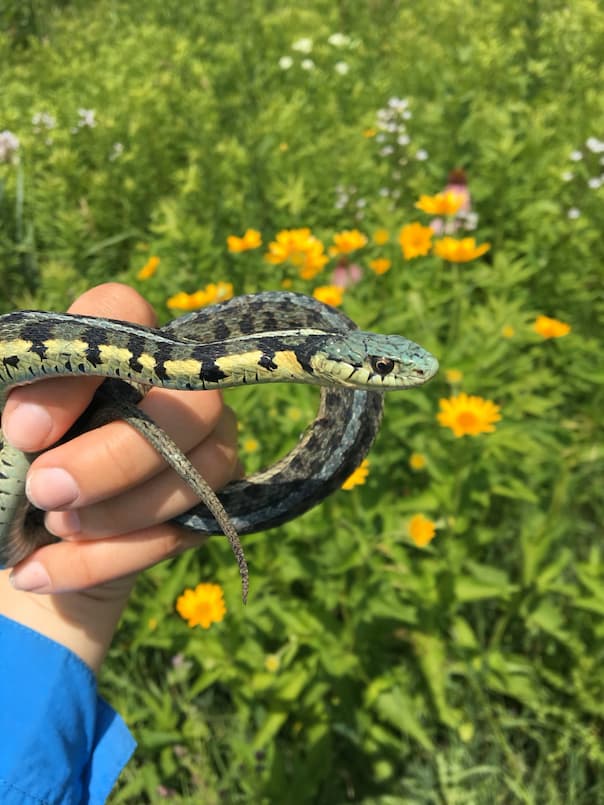
Along with eating rodents, snakes help control diseases that can increase when rodent populations get too large. Rodents carry several diseases that can be transmitted to humans and are hosts to ticks and fleas that can carry diseases like Lyme Disease, Ehrlichiosis, Rocky Mountain Spotted Fever, Plague, and Murine Typhus. Without snakes helping keep rodent numbers down, we could see increased prevalence of these diseases that are harmful to animals and humans alike.
As prey, snakes make a great meal for birds and larger mammals such as owls, hawks, fox, raccoon, and many other species. Believe it or not, some snakes, such as the Kingsnake and King Cobra, actually eat other snakes. These snakes are capable of eating venomous and non-venomous snakes. So not only do they help keep pest species populations from exploding, but they also serve as food for a number of other animals.
Lastly, snake venom is used in medicine. It contains hemotoxins that are used to treat heart attacks and blood disorders. The venom also contains neurotoxins that are used to treat Alzheimer’s, Parkinson’s Disease, strokes, and brain injuries. As the use of venom in medicine continues to grow, who knows how else venomous snakes can benefit humans.
What should I do if a snake bites me or my pet?
Here are the CDC’s “do’s and do not’s” if you are bit by a venomous snake: https://www.cdc.gov/niosh/topics/snakes/symptoms.html.
If a snake bites your pet, try to move your pet away from the animal if it is safe to do so. Make sure to avoid getting bitten yourself. If possible, try to take a picture of the species to show your veterinarian. Bring your pet to an emergency veterinary center as soon as possible, do not wait. It’s best if you can call the veterinarian on the way so they are prepared to treat your pet as soon as you get there. Try to keep the bite below heart level, remain calm, and keep your pet calm as well.
If you suspect your pet was bitten by a snake but did not see it, here are some symptoms:
- Swollen muzzle (will happen within 30 minutes of the bite)
- Dual puncture wounds may be seen. They may or may not ooze red liquid.
- Your pet may go into shock, of which symptoms include pale gums, mental dullness, increased breathing effort, slow breathing, or tremors.
How do I keep snakes out of my yard?
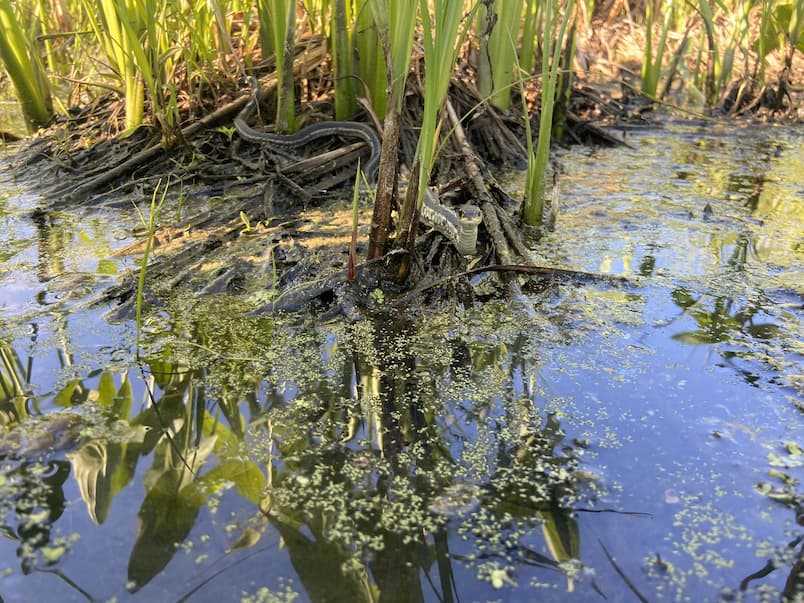
The two main resources that might attract a snake to your yard are food and shelter. Snakes eat rodents, fish, amphibians, and insects. By having snakes in your yard, they will keep populations of these animals low and help you avoid these animals. Snakes are great population control and are harmless, so having them in your yard is very beneficial. However, if you choose to make your yard unattractive to snakes, get rid of standing water, remove bird feeders, fill burrows around your house, and remove firewood, brush piles, tall grass, dense brush, and openings under sheds and concrete. Do NOT use chemical snake deterrents or traps, as these are either ineffective or pose a risk to other wildlife. The snake must also come into your yard for these products to be effective, which defeats the purpose of discouraging them from coming into your yard.
What should I do with an injured snake?
If you find an injured snake, it is likely from a predator attack, hit by a car, or from injury sustained during yard work. First, try to identify if the snake is venomous or non-venomous. If you are not sure, do not touch the snake. Also, before intervening, ensure the snake is sick or injured. Especially on sunny days, snakes find their way to gravel, pavement, or a warm flat space like a rock to bask. Usually, if you approach the healthy snake, it will move away into the grass. The snake is likely injured or sick if you see blood, scabbing, lesions on the skin, or it has a dull mentation, meaning it has lessened or no reaction to you or the environment. Once you have confirmed the snake needs assistance, you can use a stick or shovel to carefully move it out of harm’s way. If the snake is non-venomous, you can put it in a container with small air holes and a tight-fitting lid. If none are available, a pillowcase will also work. If the snake is venomous, do not touch it and call animal control. Keep the non-venomous snake in a warm and dark place until transport to a rehabilitation center. If the snake is stuck in a glue trap or netting, do not try to remove it. It is easy to further injure snakes in this position. Bring the whole trap or net to a licensed wildlife rehabilitator for removal as soon as possible.
How can I share my respect for snakes with others?
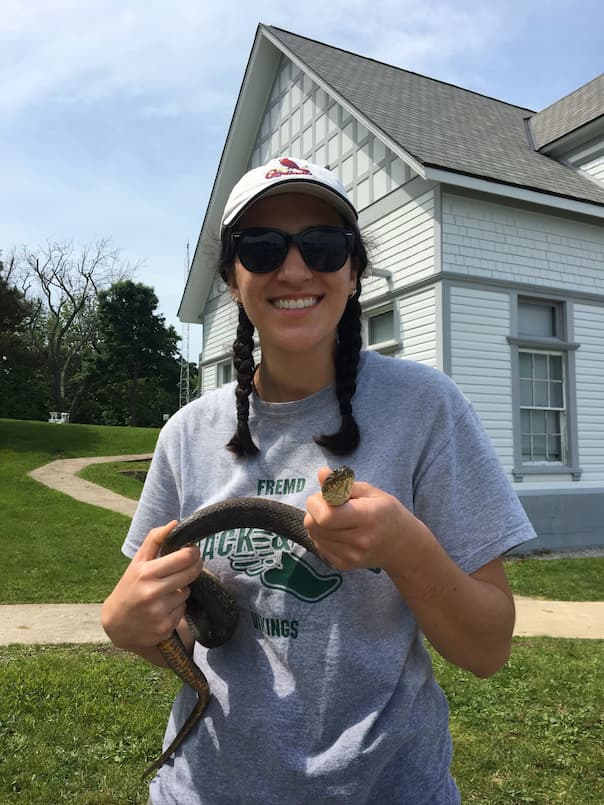
Through education and example. Tell others about why snakes are important, continue helping snakes in need, and let healthy ones go on their way when spotted in the environment! Knowing the benefit, they give to both humans and the environment may help convince people to at least leave a snake alone if they encounter one. Also, let people know that most snakes in our area are harmless and want to be as far away from humans as possible. Snakes only bite in self-defense and most venomous snake bites happen when someone is trying to handle or kill the animal. People don’t have to love snakes; we just ask that they respect them. In most cases, respect is just leaving them alone to continue on their way.
Written by Marg, Class of 2026

